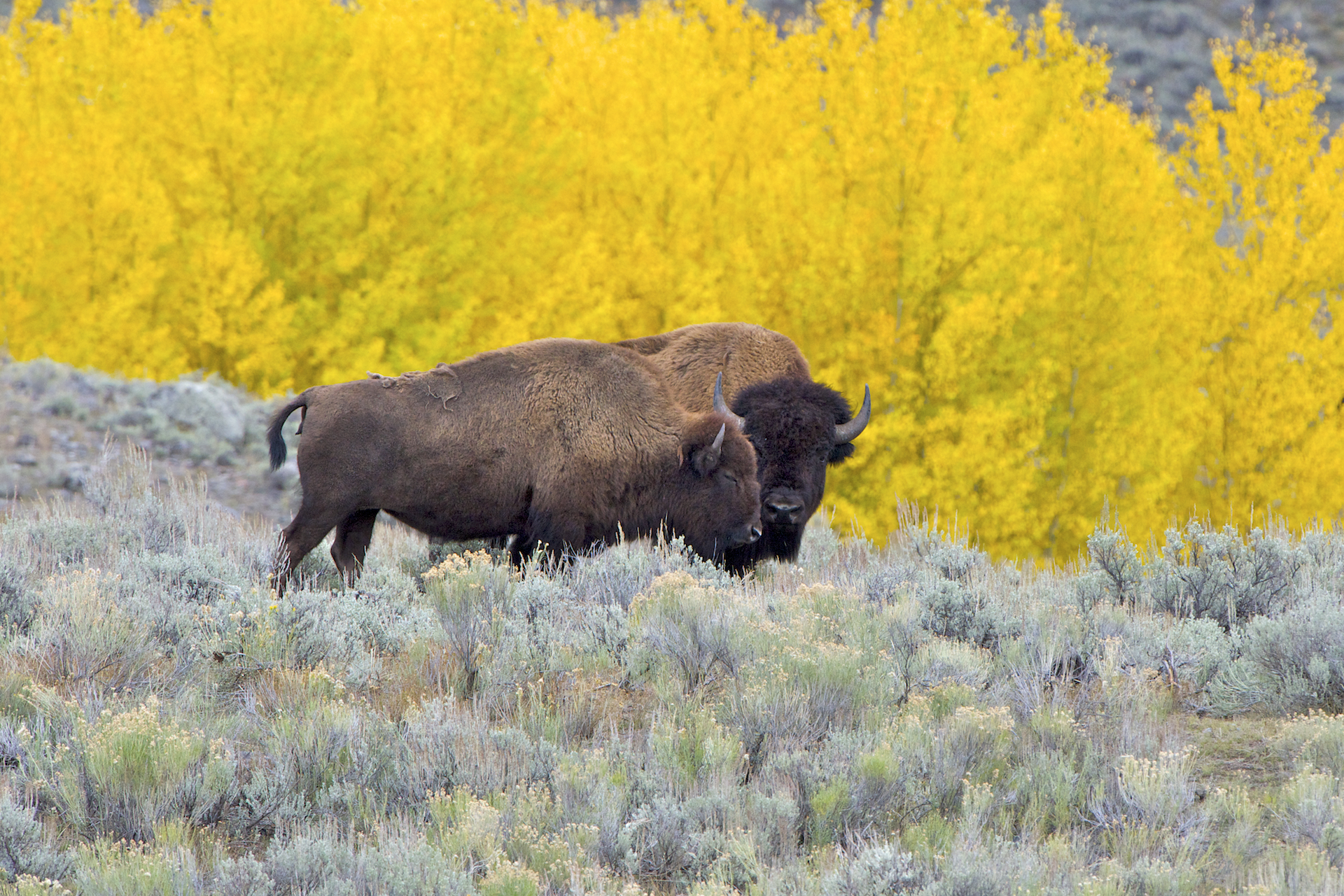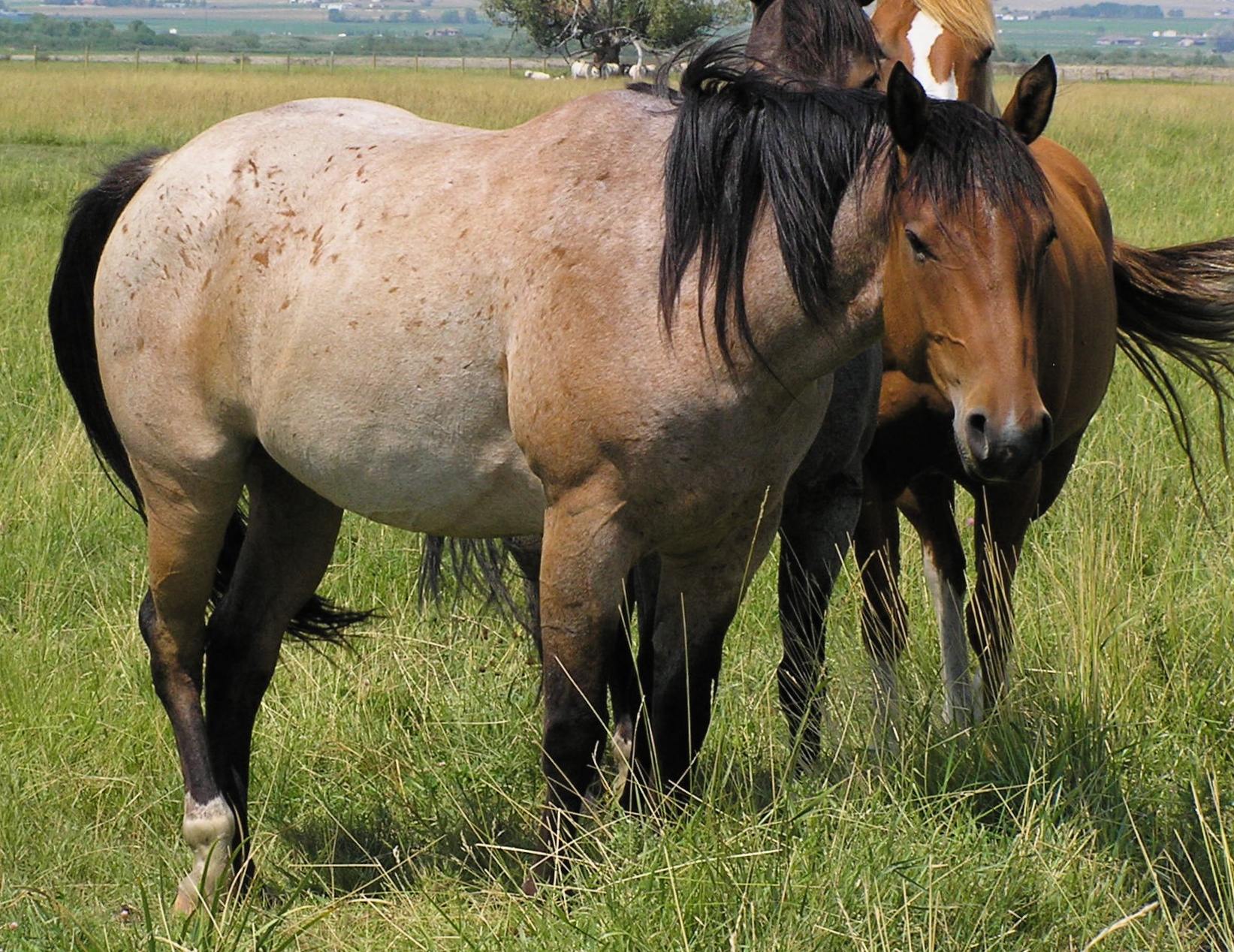|
Yak
The domestic yak (''Bos grunniens''), also known as the Tartary ox, grunting ox or hairy cattle, is a species of long-haired domesticated cattle found throughout the Himalayan region of the Indian subcontinent, the Tibetan Plateau, Kachin State (Northern Myanmar), Yunnan, Sichuan, Gilgit-Baltistan ( Kashmir), and as far north as Mongolia and Siberia. It is descended from the wild yak (''Bos mutus''). Etymology The English word "yak" originates from the . In Tibetan and Balti it refers only to the male of the species, the female being called , or in Tibetan and in Balti. In English, as in most other languages that have borrowed the word, "yak" is usually used for both sexes, with "bull" or "cow" referring to each sex separately. Taxonomy Belonging to the genus '' Bos'', Yaks are related to cattle (''Bos primigenius''). Mitochondrial DNA analyses to determine the evolutionary history of yaks have been inconclusive. The yak may have diverged from cattle at any point betw ... [...More Info...] [...Related Items...] OR: [Wikipedia] [Google] [Baidu] |
Siberia
Siberia ( ; rus, Сибирь, r=Sibir', p=sʲɪˈbʲirʲ, a=Ru-Сибирь.ogg) is an extensive geographical region, constituting all of North Asia, from the Ural Mountains in the west to the Pacific Ocean in the east. It has been a part of Russia since the latter half of the 16th century, after the Russians conquered lands east of the Ural Mountains. Siberia is vast and sparsely populated, covering an area of over , but home to merely one-fifth of Russia's population. Novosibirsk, Krasnoyarsk and Omsk are the largest cities in the region. Because Siberia is a geographic and historic region and not a political entity, there is no single precise definition of its territorial borders. Traditionally, Siberia extends eastwards from the Ural Mountains to the Pacific Ocean, and includes most of the drainage basin of the Arctic Ocean. The river Yenisey divides Siberia into two parts, Western and Eastern. Siberia stretches southwards from the Arctic Ocean to the hills of nort ... [...More Info...] [...Related Items...] OR: [Wikipedia] [Google] [Baidu] |
Wild Yak
The wild yak (''Bos mutus'') is a large, wild bovine native to the Himalayas. It is the ancestor of the domestic yak (''Bos grunniens''). Taxonomy The ancestor of the wild and domestic yak is thought to have diverged from '' Bos primigenius'' at a point between one and five million years ago. The wild yak is now normally treated as a separate species from the domestic yak (''Bos grunniens''). Description The wild yak is among the largest extant bovid species. Adults stand about tall at the shoulder, and weigh . The head and body length is , not counting the tail of .Han Jianlin, M. Melletti, J. Burton, 2014, Wild yak (Bos mutus Przewalski, 1883), Ecology, Evolution and Behavior of Wild Cattle: Implications for Conservation, Chapter 1, p.203, Cambridge University Press The females are about one-third the weight and are about 30% smaller in their linear dimensions when compared to bull wild yaks. Domesticated yaks are somewhat smaller. They are heavily built animals with a b ... [...More Info...] [...Related Items...] OR: [Wikipedia] [Google] [Baidu] |
American Bison
The American bison (''Bison bison'') is a species of bison native to North America. Sometimes colloquially referred to as American buffalo or simply buffalo (a different clade of bovine), it is one of two extant species of bison, alongside the European bison. Its historical range, by 9000 BC, is described as the great bison belt, a tract of rich grassland that ran from Alaska to the Gulf of Mexico, east to the Atlantic Seaboard (nearly to the Atlantic tidewater in some areas) as far north as New York, south to Georgia and, according to some sources, further south to Florida, with sightings in North Carolina near Buffalo Ford on the Catawba River as late as 1750. Once roaming in vast herds, the species nearly became extinct by a combination of commercial hunting and slaughter in the 19th century and introduction of bovine diseases from domestic cattle. With a population in excess of 60 million in the late 18th century, the species was culled down to just 541 animals by 18 ... [...More Info...] [...Related Items...] OR: [Wikipedia] [Google] [Baidu] |
Bison
Bison are large bovines in the genus ''Bison'' (Greek: "wild ox" (bison)) within the tribe Bovini. Two extant and numerous extinct species are recognised. Of the two surviving species, the American bison, ''B. bison'', found only in North America, is the more numerous. Although colloquially referred to as a buffalo in the United States and Canada, it is only distantly related to the true buffalo. The North American species is composed of two subspecies, the Plains bison, ''B. b. bison'', and the wood bison, ''B. b. athabascae'', which is the namesake of Wood Buffalo National Park in Canada. A third subspecies, the eastern bison (''B. b. pennsylvanicus'') is no longer considered a valid taxon, being a junior synonym of ''B. b. bison''. References to "woods bison" or "wood bison" from the eastern United States refer to this subspecies, not ''B. b. athabascae'', which was not found in the region. The European bison, ''B. bonasus'', or wisent, or zubr, or colloquially Euro ... [...More Info...] [...Related Items...] OR: [Wikipedia] [Google] [Baidu] |
Mitochondrial DNA
Mitochondrial DNA (mtDNA or mDNA) is the DNA located in mitochondria, cellular organelles within eukaryotic cells that convert chemical energy from food into a form that cells can use, such as adenosine triphosphate (ATP). Mitochondrial DNA is only a small portion of the DNA in a eukaryotic cell; most of the DNA can be found in the cell nucleus and, in plants and algae, also in plastids such as chloroplasts. Human mitochondrial DNA was the first significant part of the human genome to be sequenced. This sequencing revealed that the human mtDNA includes 16,569 base pairs and encodes 13 proteins. Since animal mtDNA evolves faster than nuclear genetic markers, it represents a mainstay of phylogenetics and evolutionary biology. It also permits an examination of the relatedness of populations, and so has become important in anthropology and biogeography. Origin Nuclear and mitochondrial DNA are thought to be of separate evolutionary origin, with the mtDNA being deri ... [...More Info...] [...Related Items...] OR: [Wikipedia] [Google] [Baidu] |
Bos Baikalensis
''Bos'' (from Latin '' bōs'': cow, ox, bull) is the genus of wild and domestic cattle. ''Bos'' is often divided into four subgenera: ''Bos'', ''Bibos'', ''Novibos'', and ''Poephagus'', but including these last three divisions within the genus ''Bos'' without including ''Bison'' in the genus is believed to be polyphyletic by many workers on the classification of the genus since the 1980s. The genus as traditionally defined has five extant species but this rises to eight when the domesticated varieties are counted as separate species, and ten when the closely related genus ''Bison'' is also included.Groves, C. P. & Grubb, P. 2011. Ungulate taxonomy. The Johns Hopkins University Press, Baltimore, Maryland.Wang, K., Lenstra, J. A., Liu, L., Hu, Q., Ma, T., Qiu, Q., & Liu, J. (2018). Incomplete lineage sorting rather than hybridization explains the inconsistent phylogeny of the wisent. Communications biology, 1(1), 1-9. Most but not all modern breeds of domesticated cattle are b ... [...More Info...] [...Related Items...] OR: [Wikipedia] [Google] [Baidu] |
Bos Grunniens At Yundrok Yumtso Lake
''Bos'' (from Latin '' bōs'': cow, ox, bull) is the genus of wild and domestic cattle. ''Bos'' is often divided into four subgenera: ''Bos'', ''Bibos'', ''Novibos'', and ''Poephagus'', but including these last three divisions within the genus ''Bos'' without including ''Bison'' in the genus is believed to be polyphyletic by many workers on the classification of the genus since the 1980s. The genus as traditionally defined has five extant species but this rises to eight when the domesticated varieties are counted as separate species, and ten when the closely related genus ''Bison'' is also included.Groves, C. P. & Grubb, P. 2011. Ungulate taxonomy. The Johns Hopkins University Press, Baltimore, Maryland.Wang, K., Lenstra, J. A., Liu, L., Hu, Q., Ma, T., Qiu, Q., & Liu, J. (2018). Incomplete lineage sorting rather than hybridization explains the inconsistent phylogeny of the wisent. Communications biology, 1(1), 1-9. Most but not all modern breeds of domesticated cattle are b ... [...More Info...] [...Related Items...] OR: [Wikipedia] [Google] [Baidu] |
Yunnan
Yunnan , () is a landlocked province in the southwest of the People's Republic of China. The province spans approximately and has a population of 48.3 million (as of 2018). The capital of the province is Kunming. The province borders the Chinese provinces of Guizhou, Sichuan, autonomous regions of Guangxi, and Tibet as well as Southeast Asian countries: Vietnam, Laos, and Myanmar. Yunnan is China's fourth least developed province based on disposable income per capita in 2014. Yunnan is situated in a mountainous area, with high elevations in the northwest and low elevations in the southeast. Most of the population lives in the eastern part of the province. In the west, the altitude can vary from the mountain peaks to river valleys by as much as . Yunnan is rich in natural resources and has the largest diversity of plant life in China. Of the approximately 30,000 species of higher plants in China, Yunnan has perhaps 17,000 or more. Yunnan's reserves of aluminium, lead, ... [...More Info...] [...Related Items...] OR: [Wikipedia] [Google] [Baidu] |
Nikolay Przhevalsky
Nikolay Mikhaylovich Przhevalsky (or Prjevalsky;; pl, Nikołaj Przewalski, . – ) was a Russian geographer of Polish descent (he was born in a Polish noble family), and a renowned explorer of Central and East Asia. Although he never reached his ultimate goal, the holy city of Lhasa in Tibet, he traveled through regions then unknown to the West, such as northern Tibet (modern Tibet Autonomous Region), Amdo (now Qinghai) and Dzungaria (now northern Xinjiang). He contributed substantially to European knowledge of Central Asian geography. He also described several species previously unknown to European science: Przewalski's horse, Przewalski's gazelle, and the wild Bactrian camel, all of which are now endangered. He was a mentor of his follower Pyotr Kozlov. Biography Przhevalsky was born in Kimborovo, in the Smolensky Uyezd of the Smolensk Governorate of the Russian Empire in the Polish noble family. He studied there and at the military academy in St. Petersburg. ... [...More Info...] [...Related Items...] OR: [Wikipedia] [Google] [Baidu] |
Roan (color)
Roan is a coat color found in many animals, including horses, cattle, antelope, cat and dogs. It is defined generally as an even mixture of white and pigmented hairs that do not "gray out" or fade as the animal ages."''roan'', ''a''. and ''n.1''" Oxford English Dictionary. 2nd edition 1989. OED Online. Oxford University Press. 3 June 2008. . There are a variety of genetic conditions which produce the colors described as "roan" in various species. Roan horses A horse with intermixed white and colored hairs of any color is usually called a roan. However, such mixtures, which can appear superficially similar, are caused by a number of separate genetic factors. Identifiable types of roans include true or classic roan, varnish roan, and rabicano, though other currently unknown factors may be responsible for ambiguous "roaning." Gray horses, which become lighter as they age until their hair coat is nearly completely white, may be confused with roans when they are young. Duns, ... [...More Info...] [...Related Items...] OR: [Wikipedia] [Google] [Baidu] |
Piebald
A piebald or pied animal is one that has a pattern of unpigmented spots (white) on a pigmented background of hair, feathers or scales. Thus a piebald black and white dog is a black dog with white spots. The animal's skin under the white background is not pigmented. Location of the unpigmented spots is dependent on the migration of melanoblasts (primordial pigment cells) from the neural crest to paired bilateral locations in the skin of the early embryo. The resulting pattern appears symmetrical only if melanoblasts migrate to both locations of a pair and proliferate to the same degree in both locations. The appearance of symmetry can be obliterated if the proliferation of the melanocytes (pigment cells) within the developing spots is so great that the sizes of the spots increase to the point that some of the spots merge, leaving only small areas of the white background among the spots and at the tips of the extremities. Animals with this pattern may include birds, cats, cattl ... [...More Info...] [...Related Items...] OR: [Wikipedia] [Google] [Baidu] |
Opinion 2027
Opinion 2027 is a 2003 ruling of the International Commission on Zoological Nomenclature (ICZN) concerning the conservation of 17 species names of wild animals with domestic derivatives. Opinion 2027 is in response to Case 3010 and subsequent comments. The 17 names involved: *'' Bombyx mandarina'' *''Bos gaurus'' *'' Bos mutus'' *'' Bos primigenius'' *'' Bubalus arnee'' *''Camelus ferus'' *'' Canis lupus'' *''Capra aegagrus'' *'' Carassius gibelio'' *'' Cavia aperea'' *'' Equus africanus'' *'' Equus ferus'' *'' Felis silvestris'' *'' Lama guanicoe'' *'' Mustela putorius'' *'' Ovis orientalis'' *''Vicugna vicugna ' is a genus containing four South American camelids, the wild guanaco and vicuña, and the domesticated llama and alpaca. Before the Spanish conquest of the Americas, llamas and alpacas were the only domesticated ungulates of the conti ...'' The opinion of the commission was that "the "name of a wild species...is not invalid by virtue of being predated by the ... [...More Info...] [...Related Items...] OR: [Wikipedia] [Google] [Baidu] |








